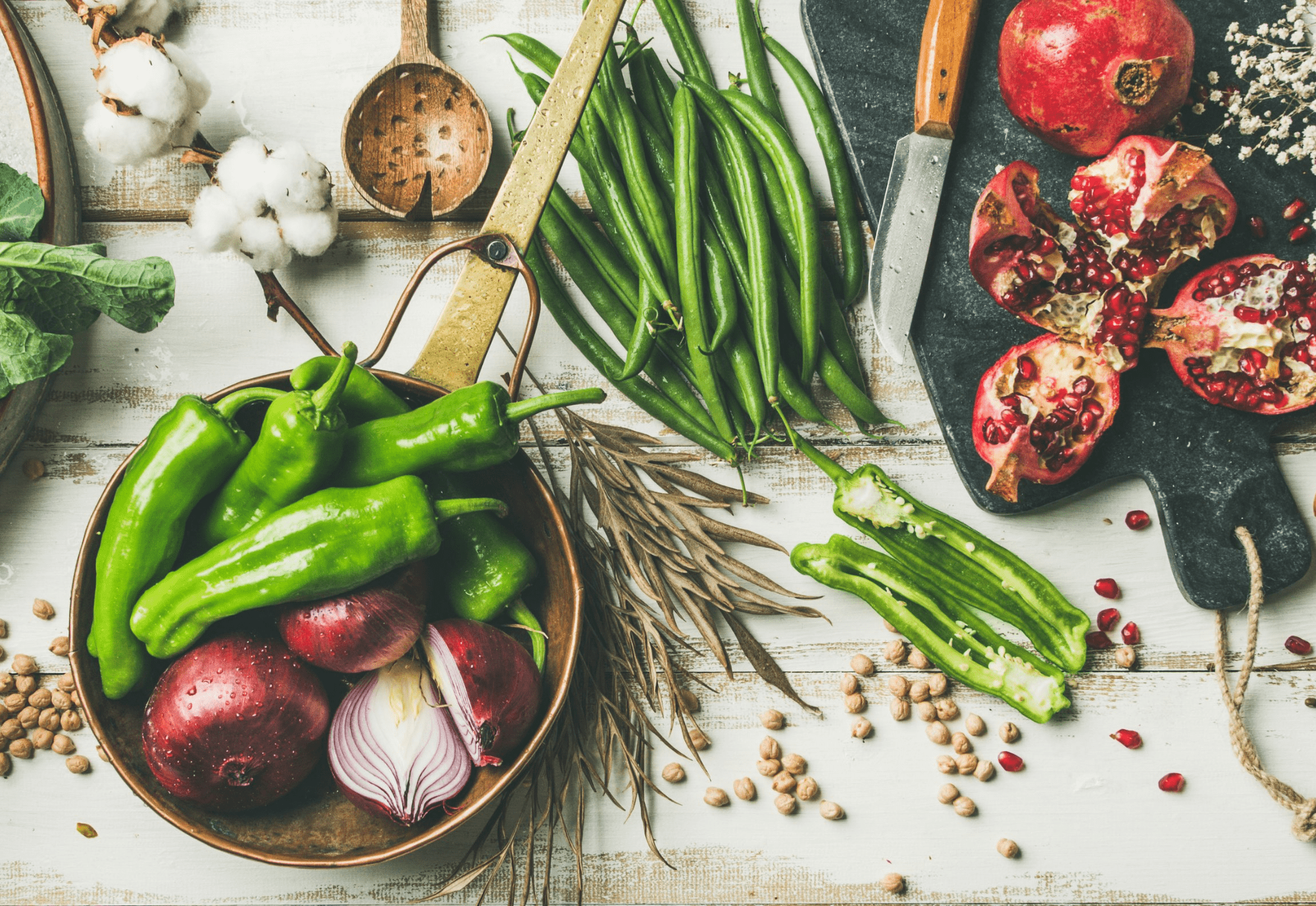How Can You Change Your Health in 30 Days?
As we close out a challenging year, I invite you to take some time to set your intentions for 2022. What is on your wish list? What is possible for you? Are you looking to start the new year with more energy, better sleep, and more wholesome eating habits?
Many of us feel reenergized for the new year and are ready to take on a challenge that we know will improve our health and our life. Perhaps you have seen your enthusiasm wane in the past. What was missing? What kept you from being consistent?
I have put a lot of thought and research into finding a program that will enable my patients and readers to not only begin the year determined to make healthy changes but also sustain and support their efforts. Let me tell you more about what I discovered—Whole30.
Whole30 is the gold standard of elimination diets.
Why would I want to do an elimination diet?
If you are like so many others who struggle with sugar cravings and junk food addiction and you’re sick and tired of struggling with lethargy, brain fog, stubborn weight gain, chronic pain, and skin conditions, Whole30 is a great place to start.
Unfortunately, most of our diets are filled with foods that destabilize blood sugar, cause inflammation, gut damage, and a myriad of other chronic conditions with adverse effects.
Sometimes, our bodies just need to reset and heal!
One way to reset and heal your body is through an elimination diet – where you will step away from foods that can be triggering a negative response in your body and spend time focusing on whole, healthy food. Complete elimination of certain foods for a set amount of time helps to determine how these foods affect your health while allowing your gut, immune system, and the rest of your body to heal and reset. The absence of these foods brings about a vast number of improvements, making it apparent how your body responds to them when you gradually add them back in. This allows you to figure out how much of and what types of food your body needs to work optimally.
What exactly is Whole 30?
Whole30 is a transformative 30-day dietary program developed by Melissa Hartwig Urban. It makes taking a break from the standard American diet (SAD) a fun and delicious experience. Thirty days gives your body time to reset from processed and sugary foods and harmful additives as well as choices that could be causing inflammation, fatigue, cravings, digestive issues, brain fog, anxiety, poor sleep, and joint pain.
For 30 days you will commit to making anti-inflammatory, gut-loving food choices. No measuring, weighing, counting, or restricting calories. You will spend your time eating real food – meat, eggs, seafood, natural fats, potatoes, veggies and fruit, seasonings and herbs, spices. You will enjoy eating things with simple, recognizable ingredients or whole, unprocessed foods that have no ingredients at all! And you can keep your coffee!
No stepping on the scale or taking body measurements — While weight loss is inevitable, it is only one of the many benefits of this program and the hyper-focus should not be on that. Instead, focus on the changes in your mood, energy, relationship with food, and overall health!
By changing the food you put on your plate, you will be able to improve:
- Sleep
- Energy levels
- Mood
- Attention span
- Body composition
- Motivation
- Self-confidence and self-efficacy
- Quality of life
What types of food will I eat on Whole30?
Whole, unprocessed foods!
- Meat
- Eggs
- Shrimp, salmon, tuna
- Fruit
- Vegetables
- Nuts
- Avocado oil, coconut oil, olive oil….
- Coffee, tea, nut milk…
What needs to be eliminated during the Whole 30?
- Grains: Oats, barley, wheat, rice, millet, corn, quinoa and buckwheat, sprouted grains, amaranth; including germs, starches, and bran.
- Added sugar and artificial sweeteners: From Splenda and Equal to honey and maple syrup (and coconut sugar, date syrup, monk fruit extract….) Read labels!
- Most legumes:
- Beans: (black, white, kidney, pinto, lentils, chickpeas, etc…)
- Peanuts: (including peanut oil and butter)
- Soy: including soy milk, protein, lecithin, tofu, sauce, edamame
- Dairy: cow, sheep, and goat milk products – cheese, ice cream, cream cheese, and kefir
- Carrageenan or sulfites: Read labels!
- Recreated baked goods even if they have compatible ingredients: For example – don’t make pancakes or muffins out of bananas and eggs even if bananas and eggs are both allowed on the diet. The diet is supposed to help change your habits and the types of food you are reaching for.
Are there any exceptions to the rules?
- Ghee or clarified butter are the only dairy products allowed (no regular butter because milk proteins are a common sensitivity!)
- Fruit juice is allowed in recipes as a sweetener stand-alone ingredient
- Some legumes are ok – green beans and many varieties of peas
- Vinegar and alcohol-based extracts are allowed (like vanilla or lemon extract) – just nothing malt-based as that contains gluten
- Coconut aminos – a naturally fermented soy sauce
What are some of the obstacles and challenges?
A key to success is planning for the challenges. And with all things in life, we will face unforeseen circumstances that require our determination and resilience.
Ask yourself what has gotten in your way in the past?
How have you overcome obstacles that have led to success in your personal and professional life?
What are my biggest strengths and how will they help me succeed?
Where do I want support? Who in my life can help me stick to my intentions?
The Whole 30 does require effort and determination. There may be times when you might feel like giving up, but keep in mind, you can do anything for 30 days. And it is for one of the most important causes you will ever have to take care of – your only body! Don’t give yourself excuses and exceptions – you need to commit to this program 100%. Don’t plan on failing and making allowances and exemptions before you even begin.
What are some tips for success?
- Read and educate yourself so you know why – Books like It Starts With Food and The Whole 30 (both written by the founder founders Dallas Hartwig and Melissa Hartwig) are great. Read and educate yourself with information, resources, and recipes.
- Schedule your food shopping and prep, this eliminates the “I have no time” excuse.
- Careful meal planning and grocery shopping – it takes time to plan your meals and shop for them. Not planning well is one of the quickest ways to cave and eat something that is not compatible with the program. You’ll need to make the effort to know ahead of time what you are going to eat and have the ingredients on hand. Buy plenty of organic and grass-fed, pastured meat and produce on sale.
- Plan and Prepare – Make your meals ahead of time. Cook once and eat two or three times. Leftovers from dinner make a great lunch the next day without the fuss! Always have a Plan B — Have emergency snacks on hand to keep you on track.
- Set up your home for success: If other people in your house aren’t doing the program, enlist their support to set up your home for your success.
- Throw away or reorganize junk food – Know your triggers. What are the foods that trip you up and that you have difficulty avoiding? Avoid the temptation by getting rid of them before you start. Do your best to get everything out of your house that isn’t compatible with your diet. If other people in your home aren’t doing the program with you or insist on the junk food, just put it all in a different cabinet than where you keep all the food you are focusing on this month.
- Find support and motivation! You can do this program alone, but it is much more fun and successful when you are part of a group. Did you know that you are as successful as the five people you spend the most time with? Sharing a craving you are having or celebrating daily little successes with someone will make the whole diet much more doable!
- Change your mindset – Instead of focusing on all of the foods that you will not be eating during the 30 days, focus on all of the healthy and wholesome food that you will be enjoying – while being thankful for better sleep, energy, and health that come with it! Celebrate the fact that you are taking charge of your health and creating a roadmap for long-term health. And, keep in mind, it is only 30 days, eliminating all these foods is not going to last forever!
- Learn to say “no thank you” – Only you are in charge of what you eat! There will always be birthday parties, weddings, holidays, and well-meaning family and friends who want to feed you. Learn to say no thank you and be confident about your decision. Only you are in charge of your health.
You will gradually add back in the food groups you have lived without for the last 30 days and will be able to more clearly tell how your body reacts to them – if you have adverse reactions like bloating, breakouts, or achy joint pain, you will know what the culprit is.
After finishing the Whole 30, you will be less reliant on processed foods and will have a better relationship with food. You will realize that you are in control instead of eating passively and without intention. You will also feel empowered to choose foods that help you be your best and live a full, quality life!










